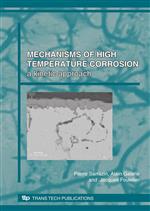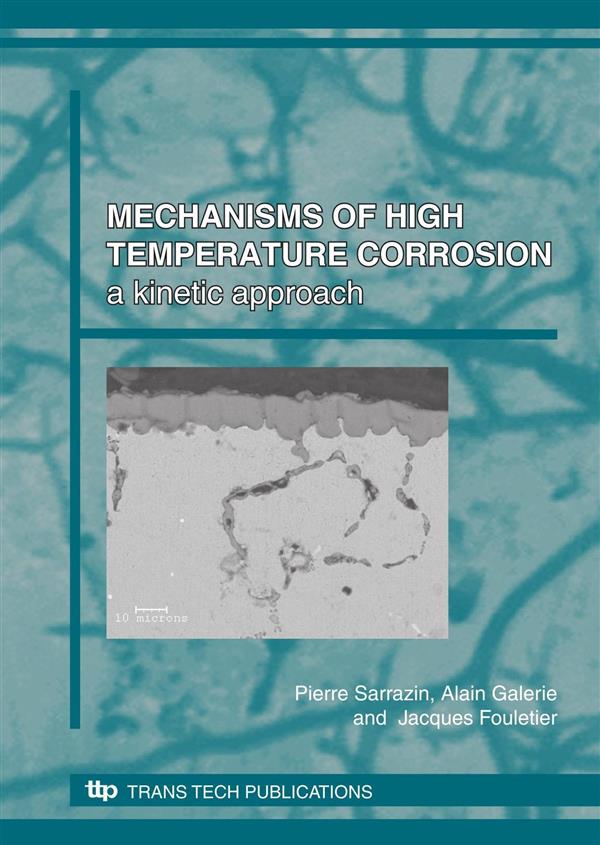Mechanisms of High Temperature Corrosion
Subtitle:
a kinetic approach
Description:
The oxidation of metals is, by definition, a reaction between a gas and a solid which usually produces a solid reaction product. At first glance, this would therefore seem to be a very simple process but, in fact, it is considerably more complex. One would like to think that the reaction product, i.e., the scale that forms on the metal, acts as a physical barrier between the reactants, and that the reaction should thus cease once the barrier is established. We know that this is unfortunately not the case, because transport of matter through the scale allows the reaction to continue. We also know that, because of density-differences between the metal and its oxide, the scale may not be sufficiently complete in coverage or may not adhere to the substrate because of cracking, spalling and detachment (wrinkling). In some extreme cases, the scale may even be a liquid which simply drips from the surface, or it may volatilize at operational temperatures. The reaction between a gas and a metal is truly very complicated.
Purchase this book:
eBook+Print
978-0-87849-484-2
* 1-User Access (Single User-Price). For Multi-User-Price please fill a
contact form
Info:
Authors:
Pierre SARRAZIN, Alain GALERIE, Jacques FOULETIER
Keywords:
Chemical Potential,
Corrosion,
Corrosion Protection,
Gas-Solid Equilibrium,
Growth and Thermal Stresses,
Metals Oxidation,
Oxidant Gases,
Oxidation Kinetics,
p- and n-type Semi-Conduction,
Point Defects,
Porous Scales,
Thermodynamic
Volume in the series:
36-37
ISBN-13 (softcover):
9780878494842
ISBN-13 (CD):
9780878491834
ISBN-13 (eBook):
9783038132455
Review from Ringgold Inc., ProtoView:
Oxidation is a reaction between a gas and a solid which usually produces a solid reaction product. This complex process is made so partially by the fact that the reaction product does not, in general, protect the solid from more oxidation, and may in fact crack, wrinkle and so cause further problems. This summarizes principles of such corrosion events, starting with thermodynamic aspects of high temperature corrosion in terms of the thermodynamics of mixtures and gas-solid equilibrium. It then covers experimental aspects of high temperature corrosion, including techniques for experimentation and phenomenological laws, and proceeds to describe scale structures (including defects responsible for its growth and the growth of porous scales, a kinetic approach to high temperature corrosion in the growth of a compact scale and multilayered scales, and corrosion protection, including atmospheric control, alloys and coatings. This includes case studies and worked examples.

